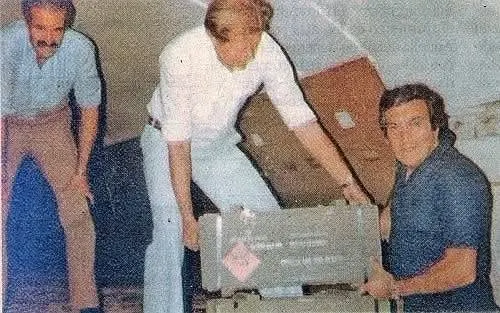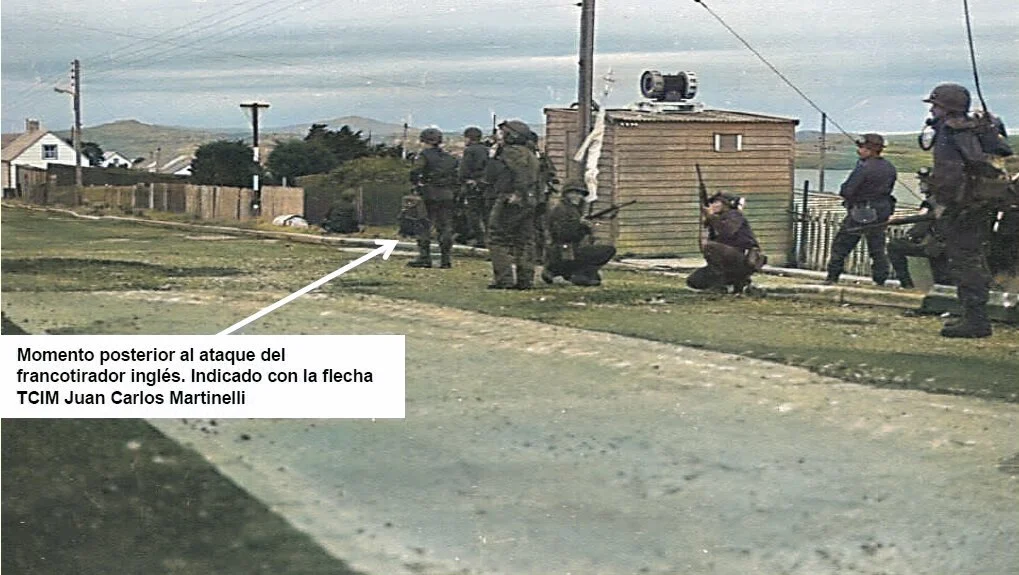
The Myth of British Illegality in the Use of Hunting Engineering BL755 Cluster Bombs
During the 1982 Malvinas War, the British invading forces made use of the Hunting Engineering BL755 cluster bomb—a weapon not equipped with anti-personnel charges, but with shaped charges intended to destroy material targets. As such, its use was permitted under international law. Any cluster bomb designed to destroy enemy hardware—be it aircraft, tanks or ships—can be lawfully employed, and continues to be used by many militaries without violating any existing international conventions.
In contrast, cluster munitions such as the French-made Belouga BLG-66 from MATRA, designed to disperse shrapnel specifically to injure or kill human beings, are clearly prohibited. Such bombs were not used by the British in the Malvinas theatre.
That a blast-fragmentation anti-materiel bomb may wound or kill personnel as collateral damage does not make it an anti-personnel weapon per se. This distinction is crucial. Dum-dum bullets or Claymore-type mines—favoured tools of extremist Castro-Guevarist factions that waged genocidal campaigns against Argentina between 1959 and 1990—are examples of explicitly anti-personnel munitions.
The BL755, produced in the United Kingdom, was originally conceived as an anti-tank cluster bomb to counter the overwhelming numerical advantage of Warsaw Pact armoured units over NATO. It contains 147 high-explosive anti-tank (HEAT) submunitions, each housed in a pre-fragmented casing that releases approximately 1,400 shards upon detonation. Naturally, these can cause harm to any individual within their effective radius—but that does not qualify them as illegal anti-personnel weapons. For comparison, a single Belouga can release over 200,000 lethal fragments.
To be clear: the use of a BL755 bomb, dispersing 147 submunitions that may each produce around 1,400 fragments, aimed at disabling enemy material across a broad zone of impact, cannot reasonably be equated with a weapon designed solely to maim or kill personnel. The intent and design of the weapon matter under international law.
Yet, ironically, Argentina did possess such anti-personnel cluster bombs in its arsenal—specifically the Belouga BLG-66, supplied by France and seen post-war mounted on aircraft such as the A-4C and Alpha Jet. These were acquired alongside Mirage IIIEA/DA fighters, originally for air superiority roles. The Belougas were tested and operational across several Argentine aircraft, including the A-4B/C and the Super Étendard. There is no confirmed information on whether they were adapted for use in the IA-58A Pucará or the Navy’s A-4Q. Still, Argentine commanders chose not to employ these weapons during the conflict.
In fact, even though Argentine forces had access to incendiary Napalm bombs—deployed on the Malvinas themselves—these too were not used against enemy troops, despite their obvious anti-personnel effects.
For Argentine soldiers subjected to these British weapons, the legality or ethics of their use were of little concern in the moment. A single fragment could wound, mutilate, or kill—but those same soldiers would have employed such weapons without hesitation had it meant surviving or gaining an upper hand. And still, despite possessing bombs with greater destructive power than those used by the British, Argentina chose restraint—out of adherence to the laws of war and a deeply human sense of morality, even in the inhuman context of battle.
Some claim Britain crossed into illegality—not due to the raw power of its bombs, but in the tactical method of their use. The sheer lethality of 147 submunitions and over 200,000 potential fragments raining down on an Argentine infantry company is known only to those who lived it. But the difference between that and a Belouga’s 198,600 extra fragments—a 1,430% increase in destructive capability—puts the argument of proportionality into sharp perspective.
It’s also true that no formal declaration of war was ever issued by either side. The conflict unfolded in fact, not in law, with both nations operating in murky legal waters. Nonetheless, both Argentina and the UK largely respected the humanitarian norms of armed engagement, barring isolated abuses triggered by the brutal chaos of close combat.
Had this been a total war—like the Second World War, Korea, Vietnam, the Gulf, or Yugoslavia—different thresholds of legitimacy and restraint would likely have applied to both sides.
The Hunting Engineering BL755, developed in the early 1970s with a standard weight of 264 kg, a length of 2.45 m, and a diameter of 419 mm, was manufactured in several variants (BL755, IBL755, RBL755). Beyond the Malvinas, it was also used in the Gulf War and the conflict in the former Yugoslavia by Britain and Germany (now withdrawn from service), and reportedly by Iran, Serbia (possibly reverse-engineered), and India—still in service today on aircraft such as the MiG-27, Jaguar, Sea Harrier, and possibly the MiG-29, HAL Tejas, and Su-30.
To Argentine Malvinas War Veterans, the BL755 remains a haunting symbol of destruction. Though no longer in production, its legacy is etched into the memories of those who faced it. And it remains a testament to the resilience, sacrifice, and moral clarity of Argentine forces, who fought with dignity—even as shadows fell over the South Atlantic skies.



















